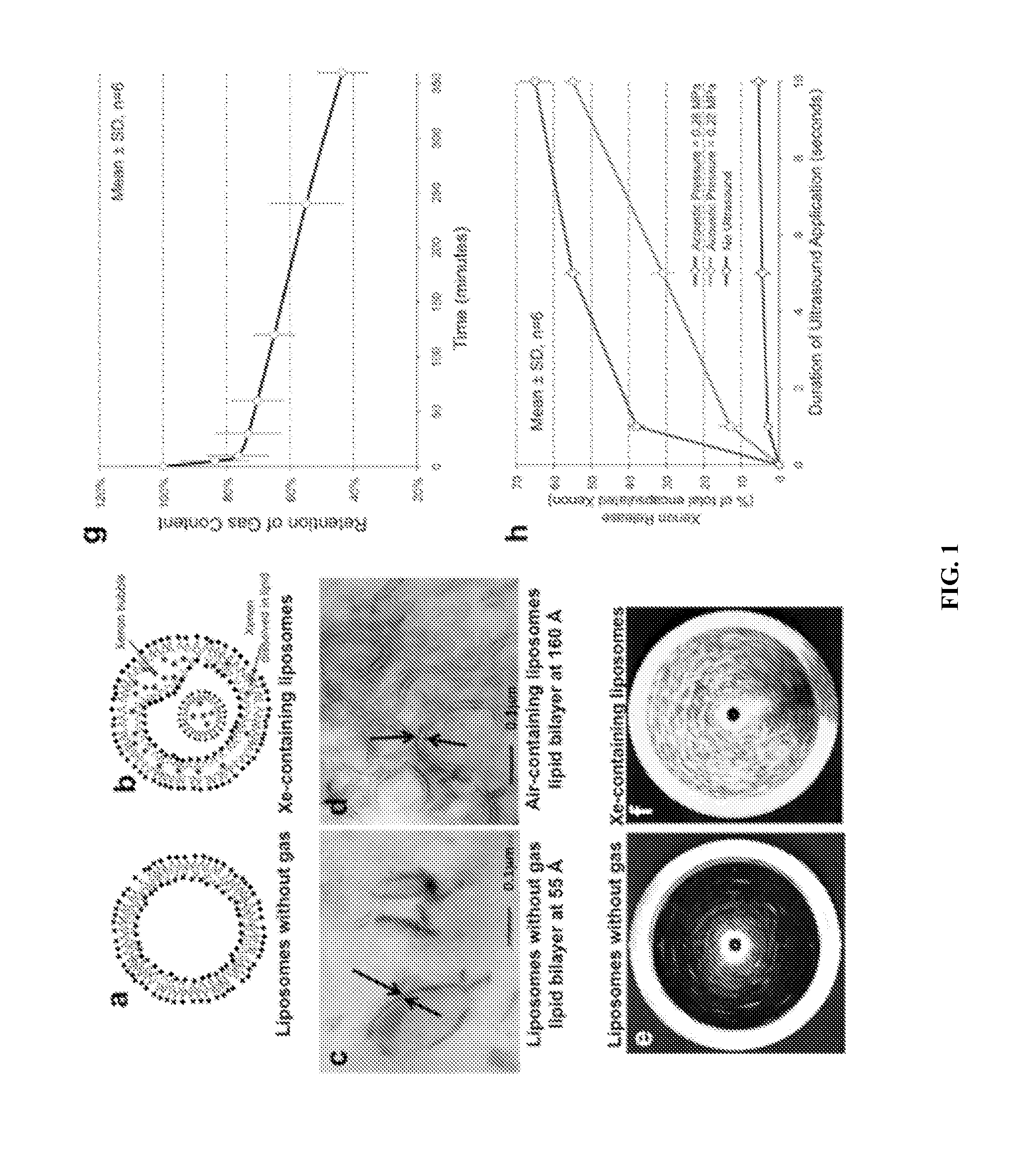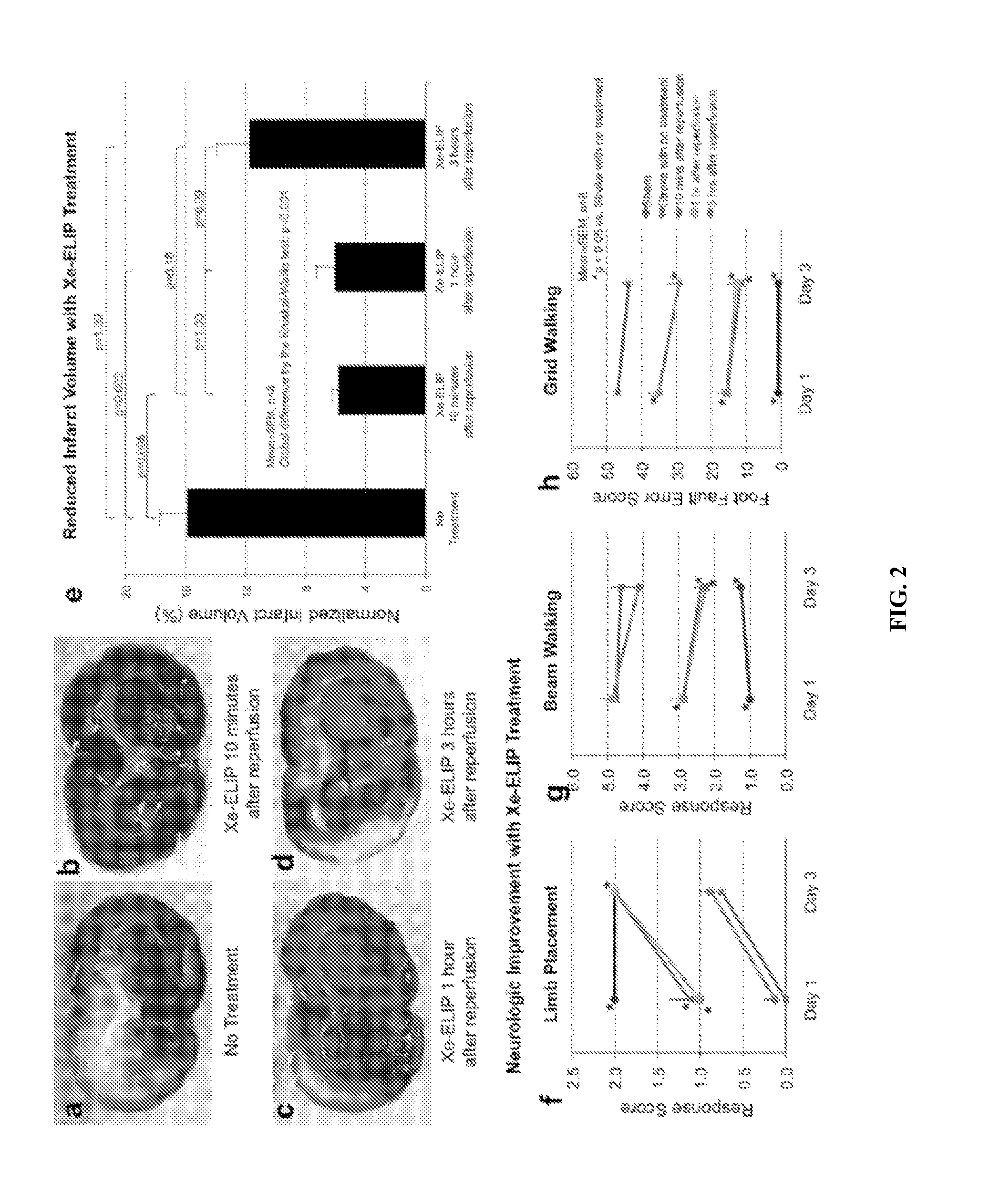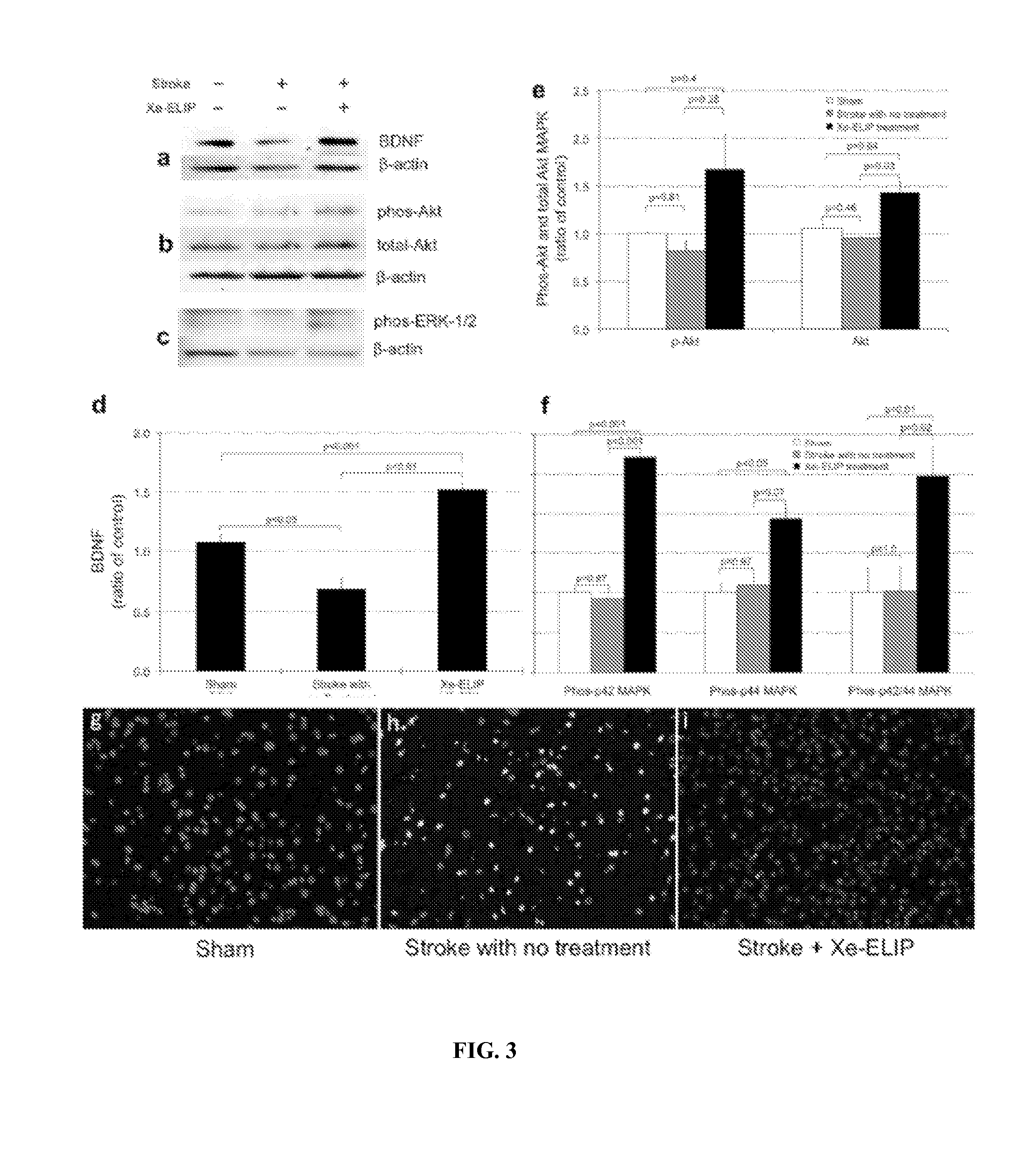Neuroprotective liposome compositions and methods for treatment of stroke
- Summary
- Abstract
- Description
- Claims
- Application Information
AI Technical Summary
Benefits of technology
Problems solved by technology
Method used
Image
Examples
example 1
Xe-ELIP Production and Experimental Methods
[0088]Xe-ELIP Production
[0089]Xenon-ELIP were produced using the freeze thaw protocol that is schematically illustrated in FIG. 7 (see also, U.S. Pat. No. 7,976,743, incorporated herein by reference). Briefly, liposomes were composed of L-α-phosphatidylcholine (egg PC), 1,2-dipalmitoyl-sn-glycero-3-phosphocholine (DPPC; Avanti Polar Lipids, Alabaster, Ala.); 1,2-dipalmitoyl-sn-glycero-3-phosphoethanolamine-N-[methoxy(polyethylene glycol)-2000] (16:0 PEG2000 PE) and cholesterol (Sigma, St Louis, Mo.). Five milligrams of lipids was mixed in chloroform, and the solvent was evaporated with argon in a 50° C. water bath to form a thin film on the glass vial. The lipid film was placed under vacuum for 4 to 6 hours for complete solvent removal. The dried lipid film was hydrated with 0.32 mol / L mannitol to a concentration of 10 mg lipid per milliliter, followed by sonication for 5 minutes. The sonicated liposomes were transferred to a 2-mL glass via...
example 2
Xe-ELIP as Therapeutic for Stroke
[0105]The dose dependency Xe-ELIP therapy was first investigated by injecting Xe-ELIP at dosage range of 1-4 mg / rat (3.5, 7 and 14 mg / kg) at 3 hours after stroke onset on a Male Sprague-Dawley rat model with occlusion (for 2 hours) of the right transient endovascular filament middle cerebral artery (MCAO). Treatment groups that received 7 mg / kg or 14 mg / kg of Xe-ELIP at 3 hours after stroke onset reduced the normalized infarct size to 6.0±2% (p=0.04) and 3.7±2% (p=0.002) respectively (FIG. 4a-e). This study demonstrates that Xe-ELIP administered within 3 hours after stroke onset at a dosage larger than 2-4 mg (e.g., 7 mg / kg or greater) provide best neuroprotection.
[0106]Behavioral assessments of neurological damage were conducted by recording limb placing, beam walking and grid walking abilities in a quiet and low-lit room in an observer blinded manner at days 1, 2 and 3 after surgery. Results are shown in FIG. 4f-h demonstrate very significant behav...
example 3
Xe-ELIP Provides Effective Protection in Hemorrhagic Stroke
[0113]Xe-ELIP compositions were produced as detailed in Example 1. To assess the efficacy Xe-ELIP a rat model of subarachnoid hemorrhage was employed. Briefly, healthy male Sprague Dawley rats (Harlan Laboratories Inc., Indianapolis, Ind.) weighing between 260-280 grams were obtained. All surgical procedures were performed under dissecting microscope on anesthetized animal. The right external carotid artery was isolated and a 4.0 fabricated sharp nylon monofilament was introduced through the internal artery to perforate the middle cerebral artery. The monofilament was immediately retracted to resume blood flow to the middle cerebral artery. The blood flow was monitored to confirm the bleeding.
[0114]Following the induction of bleeding Xe-ELIP (600 μl, 10 mg / ml) was infused for 5 minutes through the femoral vein with simultaneous ultrasound application (0.5 MPa) over the internal carotid artery to trigger the release of xenon ...
PUM
 Login to View More
Login to View More Abstract
Description
Claims
Application Information
 Login to View More
Login to View More - R&D
- Intellectual Property
- Life Sciences
- Materials
- Tech Scout
- Unparalleled Data Quality
- Higher Quality Content
- 60% Fewer Hallucinations
Browse by: Latest US Patents, China's latest patents, Technical Efficacy Thesaurus, Application Domain, Technology Topic, Popular Technical Reports.
© 2025 PatSnap. All rights reserved.Legal|Privacy policy|Modern Slavery Act Transparency Statement|Sitemap|About US| Contact US: help@patsnap.com



